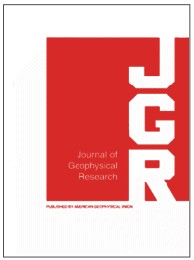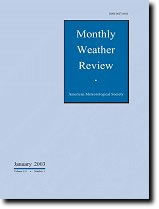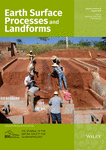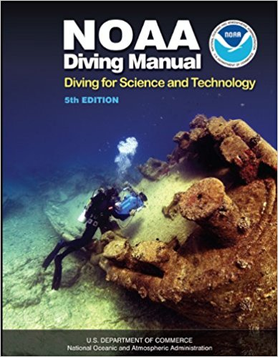
In academic publishing, a scientific journal is a periodical publication intended to further the progress of science, usually by sharing findings from research with readers. They are normally specialized based on discipline, with authors picking which one they send their manuscripts to.

Scientific literature comprises scholarly publications that report original empirical and theoretical work in the natural and social sciences. Within an academic field, scientific literature is often referred to as "the literature". Academic publishing is the process of contributing the results of one's research into the literature, which often requires a peer-review process.
Proceedings of the Royal Society is the main research journal of the Royal Society. The journal began in 1831 and was split into two series in 1905:
In academia and librarianship, conference proceedings is a collection of academic papers published in the context of an academic conference or workshop. Conference proceedings typically contain the contributions made by researchers at the conference. They are the written record of the work that is presented to fellow researchers. In many fields, they are published as supplements to academic journals; in some, they are considered the main dissemination route; in others they may be considered grey literature. They are usually distributed in printed or electronic volumes, either before the conference opens or after it has closed.
The Journal of Statistical Software is a peer-reviewed open-access scientific journal that publishes papers related to statistical software. The Journal of Statistical Software was founded in 1996 by Jan de Leeuw of the Department of Statistics at the University of California, Los Angeles. Its current editors-in-chief are Achim Zeileis, Bettina Grün, Edzer Pebesma, and Torsten Hothorn. It is published by the Foundation for Open Access Statistics. The journal charges no author fees or subscription fees.

Geophysical Research Letters is a biweekly peer-reviewed scientific journal of geoscience published by the American Geophysical Union that was established in 1974. The editor-in-chief is Harihar Rajaram.

The Journal of Geophysical Research is a peer-reviewed scientific journal. It is the flagship journal of the American Geophysical Union. It contains original research on the physical, chemical, and biological processes that contribute to the understanding of the Earth, Sun, and Solar System. It has seven sections: A, B, C (Oceans), D (Atmospheres), E (Planets), F, and G (Biogeosciences). All current and back issues are available online for subscribers.

The Monthly Weather Review is a peer-reviewed scientific journal published by the American Meteorological Society. It covers research related to analysis and prediction of observed and modeled circulations of the atmosphere, including technique development, data assimilation, model validation, and relevant case studies. This includes papers on numerical techniques and data assimilation techniques that apply to the atmosphere and/or ocean environment. The editor-in-chief is David M. Schultz.

PLOS One is a peer-reviewed open access mega journal published by the Public Library of Science (PLOS) since 2006. The journal covers primary research from any discipline within science and medicine. The Public Library of Science began in 2000 with an online petition initiative by Nobel Prize winner Harold Varmus, formerly director of the National Institutes of Health and at that time director of Memorial Sloan–Kettering Cancer Center; Patrick O. Brown, a biochemist at Stanford University; and Michael Eisen, a computational biologist at the University of California, Berkeley, and the Lawrence Berkeley National Laboratory.

Atmospheric Chemistry and Physics is an open access peer-reviewed scientific journal published by the European Geosciences Union. It covers research on the Earth's atmosphere and the underlying chemical and physical processes, including the altitude range from the land and ocean surface up to the turbopause, including the troposphere, stratosphere, and mesosphere. The main subject areas comprise atmospheric modelling, field measurements, remote sensing, and laboratory studies of gases, aerosols, clouds and precipitation, isotopes, radiation, dynamics, and biosphere and hydrosphere interactions. Article types published are research and review articles, technical notes, and commentaries.

Climate Dynamics is a peer-reviewed scientific journal published by Springer Science+Business Media. It covers all aspects of the dynamics of global climate systems, including analytical and numerical modeling research on the structure and behavior of the atmosphere, oceans, cryosphere, biomass, and land surface as interacting components of the dynamics of global climate. The journal also publishes reviews and papers emphasizing an integrated view of the physical and biogeochemical processes governing climate and climate change.

Earth Surface Processes and Landforms is a peer-reviewed scientific journal published by John Wiley & Sons on behalf of the British Society for Geomorphology. It covers geomorphology and more in general all aspects of Earth sciences dealing with the Earth surface. The journal was established in 1976 as Earth Surface Processes, obtaining its current name in 1981. The journal primarily publishes original research papers. It also publishes Earth Surface Exchanges which include commentaries on issues of particular geomorphological interest, discussions of published papers, shorter journal articles suitable for rapid publication, and commissioned reviews on key aspects of geomorphological science. Foci include the physical geography of rivers, valleys, glaciers, mountains, hills, slopes, coasts, deserts, and estuary environments, along with research into Holocene, Pleistocene, or Quaternary science. The editor-in-chief is Stuart Lane.

Geoscientific Model Development is a peer-reviewed open access scientific journal published by Copernicus Publications on behalf of the European Geosciences Union. It covers the description, development, and evaluation of numerical models of the Earth system and its components.
Oceanography is a quarterly peer-reviewed scientific journal that publishes articles about ocean science and its applications. It is published by The Oceanography Society, a nonprofit professional society based in the United States.
Reviews of Geophysics is a quarterly peer-reviewed scientific journal published by Wiley-Blackwell on behalf of the American Geophysical Union. The current editor-in-chief is Fabio Florindo.

The Annual Review of Marine Science is an annual peer-reviewed scientific review journal published by Annual Reviews. It was established in 2009. It covers all aspects of marine science. The co-editors are Craig A. Carlson and Stephen J. Giovannoni. As of 2022, Journal Citation Reports gives the journal a 2020 impact factor of 16.561, ranking it first out of 113 in the category "Marine & Freshwater Biology", first out of 66 in the category "Oceanography", and second out of 87 journals in the category "Geochemistry & Geophysics".
Scholarly peer review or academic peer review is the process of having a draft version of a researcher's methods and findings reviewed by experts in the same field. Peer review is widely used for helping the academic publisher decide whether the work should be accepted, considered acceptable with revisions, or rejected for official publication in an academic journal, a monograph or in the proceedings of an academic conference. If the identities of authors are not revealed to each other, the procedure is called dual-anonymous peer review.

Ulrich "Uli" Pöschl is an Austrian chemist who was appointed Director of the newly founded Department of Multiphase Chemistry at the Max Planck Institute for Chemistry in Mainz, Germany on 1 October 2012.

Polar Science is a quarterly peer-reviewed scientific journal covering research related to the polar regions of the Earth and other planets. It is published by Elsevier on behalf of the National Institute of Polar Research (Japan). It covers a wide range of fields, including atmospheric science, oceanography, glaciology and environmental science. The editor-in-chief is Takashi Yamanouchi.

The NOAA Diving Manual: Diving for Science and Technology is a book originally published by the US Department of Commerce for use as training and operational guidance for National Oceanographic and Atmospheric Administration divers. NOAA also publish a Diving Standards and Safety Manual (NDSSM), which describes the minimum safety standards for their diving operations. Several editions of the diving manual have been published, and several editors and authors have contributed over the years. The book is widely used as a reference work by professional and recreational divers.














